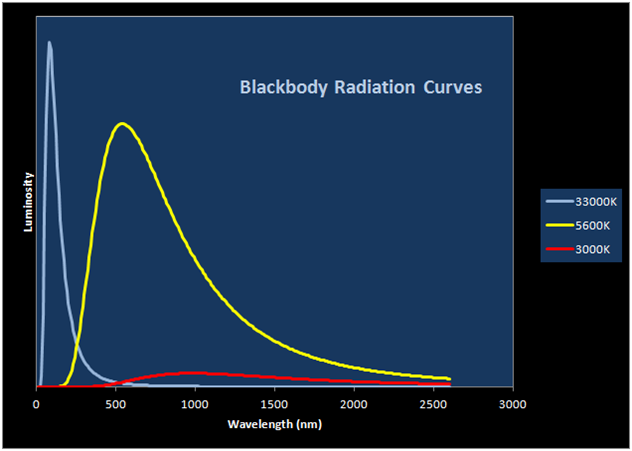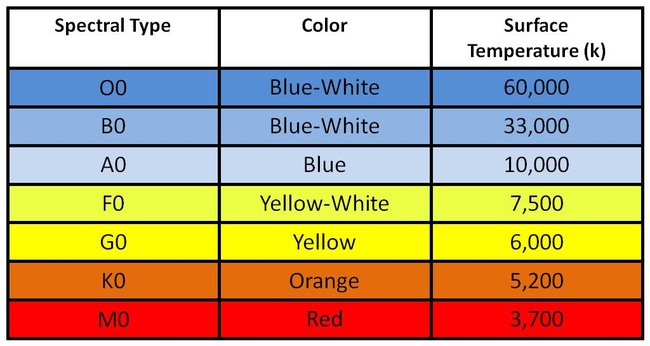Distant Nature: Astronomy Exercises
Objectives
This exercise will discuss the concepts of "blackbody
radiation" and demonstrate the relationships between Luminosity and the
spectrum of radiation emitted by black bodies, and their surface temperatures.
Also, we will use the fact that stars are approximate black bodies and behave
in a manner consistent with the concepts and relationships true of blackbody
radiation.
Equipment/Materials Needed
Stellarium, Calculator, Small Ruler.
Subject Introduction
A "black body"
is a theoretically perfect absorber of radiation at all wavelengths. It
reflects no light and therefore it appears "black". In general, an
object can be considered a black body when it is in a state of equilibrium and
has weak interaction with its surroundings. Stars are not perfect black bodies,
but they are a close approximation and the laws of blackbody radiation can be
used to study stellar radiation characteristics.
In late 1900 the German scientist Max Planck made a radical assumption to
explain observed blackbody radiation spectra. Planck assumed that radiant
energy is emitted in "quanta" or "quantum" (small packets
of radiation). Each quantum's energy depends on the frequency of the electromagnetic
radiation by the equation:

Figure 1. Blackbody radiation spectra for various temperatures.
Wilhelm Wien discovered that when the temperature of a blackbody radiator is increased, the total radiated energy increases and that the maximum of the energy distribution (each curve in Figure 1.) is located at shorter wavelengths. Wien found that multiplying the wavelength of the distribution maximum times the temperature of the black body was a constant, yielding the formula for Wien's Displacement Law given as :
Wien's Displacement Law is perfect for studying distant stars. Stars are radiant objects with temperatures much higher than their surroundings. With Wien's Displacement Law, we can determine the surface temperature of distant stars and with that information, we can determine their total energy.
One of the ways we categorize stars is with Spectral Type. This is a classification scheme using the following nomenclature:
The letters, O B A F G K M (Oh Be A Fine Girl [or Guy] Kiss Me), with each subdivided into 10 minor divisions (e.g. F0, F1, F2, ..., F9, G0, etc). Table 1. summarizes information concerning the major spectral classes/types of stars.

Table 1.
In this exercise, you will use energy distribution curves provided for several stars to find their λmax. From there you will use Wien's Displacement Law to determine each star's surface temperature and spectral type. Finally, you will lookup the stars in Stellarium to obtain each one's spectral type and compare it to your findings.